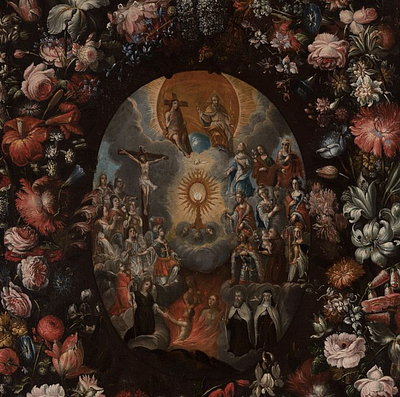Italian school of the seventeenth century. Circle of IL GUERCINO (Cento, Italy, 1591-Bologna, 1666). "Penitent St. Jerome." Oil on canvas. Re-colored.
Lot 87
About Seller
Setdart Auction House
Carrer Aragó 346
Barcelona
Spain
Setdart Subastas was born in 2004 and is currently the first online art auction in Spain with solidity, prestige and reliability guaranteed by our more than 60,000 users. Setdart has a young, dynamic and enterprising team ready to successfully manage the purchase and sale of art works through custom...Read more
Estimate:
EUR€6,000 - EUR€7,000
$6,521.74 - $7,608.70
Absentee vs Live bid
Two ways to bid:
- Leave a max absentee bid and the platform will bid on your behalf up to your maximum bid during the live auction.
- Bid live during the auction and your bids will be submitted real-time to the auctioneer.
Bid Increments
| Price | Bid Increment |
|---|---|
| EUR€0 | EUR€10 |
| EUR€200 | EUR€25 |
| EUR€500 | EUR€50 |
| EUR€1,000 | EUR€100 |
| EUR€3,000 | EUR€200 |
| EUR€5,000 | EUR€500 |
| EUR€10,000 | EUR€1,000 |
| EUR€20,000 | EUR€2,000 |
| EUR€50,000 | EUR€5,000 |
About Auction
By Setdart Auction House
Jul 14, 2021
Set Reminder
2021-07-14 06:30:00
2021-07-14 06:30:00
America/New_York
Bidsquare
Bidsquare : OLD MASTERS
https://www.bidsquare.com/auctions/setdart-auction-house/old-masters-7202
Setdart Auction House sofia@setdart.com
Setdart Auction House sofia@setdart.com
- Lot Description
Italian school of the seventeenth century. Circle of IL GUERCINO (Cento, Italy, 1591-Bologna, 1666). "Penitent St. Jerome." Oil on canvas. Re-colored. With period frame. Size: 150 x 117 cm; 174 x 141 cm (frame). This canvas shows a typical iconography of the seventeenth century, that of St. Jerome penitent. Saint Jerome reached great popularity during the Counter-Reformation, due to his repentance and contemplative life, useful values to move the faithful. Due to its physical and formal characteristics, the present work can be related to the circle of Giovan Francesco Barbieri, better known by his nickname Il Guercino, representative of the transition period from Roman-Bolognese classicism to full Baroque. We are in front of a canvas contextualized in the period of penitence of the Saint, approached in a clear and orderly composition, open on the right side to a landscape that is barely glimpsed. The canvas stands out for its balanced illumination, in which the torso and the face of the Saint stand out, and also for the intense crimson tone of his cloak and cape. Next to him we see the lion, lying at his feet, the skull and the scriptures, all enveloped in a nuanced penumbra. One of the four great Doctors of the Latin Church, St. Jerome was born near Aquileia (Italy) in 347. Trained in Rome, he was an accomplished rhetorician and polyglot. Baptized at the age of nineteen, between 375 and 378 he retired to the Syrian desert to lead an anchorite's life. He returned to Rome in 382 and became a collaborator of Pope Damasus. One of the most frequent representations of this saint is his penance in the desert. His attributes are the stone he uses to beat his chest and the skull on which he meditates. Also the cardinal's cape (or a red mantle), although he was never a cardinal, and the tamed lion. The latter comes from a story of the "Golden Legend", where it is narrated that one day, when he was explaining the Bible to the monks of his convent, he saw a lion coming with a limp. He removed the thorn from its paw, and from then on he kept it in his service, instructing it to look after his donkey while it grazed. Some merchants stole the donkey, and the lion recovered it, returning it to the saint without hurting the animal.
- Shipping Info
-
In-house shipping available. Please inquire at admin@setdart.com.
-
- Buyer's Premium



 EUR
EUR CAD
CAD AUD
AUD GBP
GBP MXN
MXN HKD
HKD CNY
CNY MYR
MYR SEK
SEK SGD
SGD CHF
CHF THB
THB
















